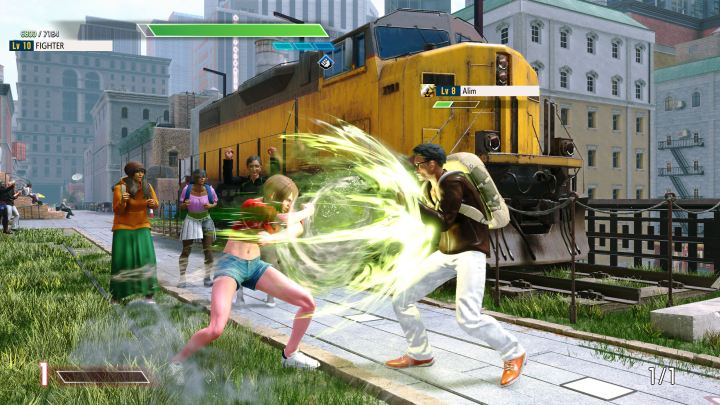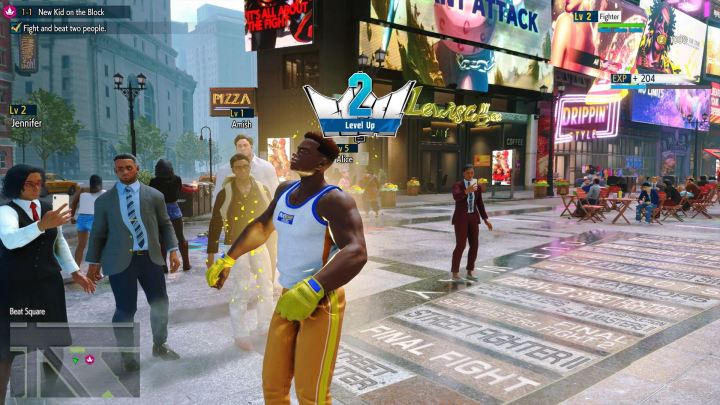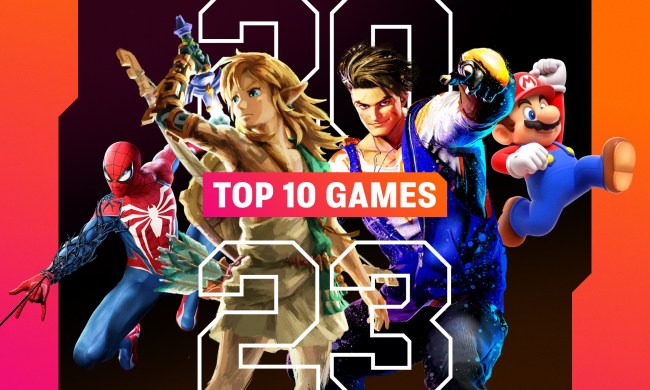As hard as I’ve tried, I’ve never quite been able to wrap my head around traditional 2D fighting games. I’ve clicked with the fast pace of Super Smash Bros., but I’ve just never been able to hold my own online in a King of Fighters XV match. For me, it’s always been an education and onboarding issue. Most fighting games I’ve tried teach me their wealth of nuances in a lightning-fast tutorial that shows me how to do dozens of things in the span of a few minutes. With that whirlwind pace and a lack of practical context, I always find it difficult to actually retain all of that information.
Street Fighter 6 is perhaps the first 2D fighting game that fully solves my problem and that’s because of its standout World Tour mode. At first glance, World Tour seems like a meaty piece of single-player content for players to pick at between matches. But for more casual brawlers like me, it serves a much more important purpose: It’s the most thorough, effective fighting game tutorial ever crafted.
Learning to fight
As a piece of single-player content, World Tour is an ambitious mode. It’s a full-on action RPG that plays like a classic Yakuza game. Players explore Metro City, and a few other locations, in 3D and stop to brawl in 2D battles. It’s a lengthy campaign that takes over 15 hours to complete and is filled with RPG hooks, from stats to skill trees. It’s an impressive piece of content that helps make Street Fighter 6 feel like a fully fleshed-out release on day one.
When I got my review copy a few weeks back, I went straight to World Tour mode upon firing it up. I figured it would be a good way to practice the basics of fighting in a low-stakes environment before I took the battle online. That’s true, but World Tour goes one step further than that. It’s built in such a way that it hammers in every single aspect of its fighting system by teaching them at a steady pace and giving players ample time to commit each trick to memory.

When my World Tour adventure began, my user-created brawler had a very stripped-down move set. I could perform Luke’s regular attacks and a special or two, but I didn’t have moves like aerials and super arts. That would force me to focus on the basics for the campaign’s opening hour or two. Through a few opening battles, I could spend time getting comfortable with Street Fighter 6’s movement as well as the core flow of attacking.
From there, World Tour layers on new ideas one at a time. I’d soon meet Chun-Li and inherit her basic move set, letting me take everything I’d learned and try it out on a different character. By the end of the campaign, I learned every single one of Street Fighter 6’s 18 fighters inside and out. That would eliminate that at times overwhelming experimentation paralysis I feel anytime I load up a new fighting game and am faced with a huge character select screen.
Capcom uses the RPG setup of World Tour to push its tutorial potential even further. Moves almost function like gear here, as players equip new attacks to unlockable slots. The more I level up, the more special attacks I can equip at once. That allows me to add a new directional attack to my arsenal one at a time, giving me ample time to practice how to perform a down or back special. By the time I finally unlock my super art skill slot, I’m so comfortable with basic combat that I can spend my next few encounters focusing on how to execute that maneuver and figure out any timing nuances.

Side-quests are especially well handled here, as several of them are built around teaching players a new skill. Early in the campaign, I learn how to perform Street Fighter 6’s new Drive Impact move through a practical battle with an NPC. After getting ample time to commit that to memory through story battles, another side-quest, later on, teaches me how to counter another player’s Drive Impact with my own. That naturally layers on top of my established knowledge, once again giving me time to focus on that skill in my ensuing battles.
From a personal standpoint, I can attest that all of this works as a teaching tool. When I demoed Street Fighter 6 before it launched, I struggled to beat computer-controlled characters in Arcade mode. After I finished World Tour, I went back to that mode and found that I was pulling off Perfect KOs against those same computer players. I came out of World Tour with a deep understanding of the entire system, from every character’s style to the deepest nuances of battle.
If you’ve always found fighting games like this intimidating, I highly recommend picking up Street Fighter 6 and diving straight into World Tour. It’s a thorough tutorial delivered through a sizable single-player mode that’s fun in its own right. It may not turn you into a pro, but it’ll transform you from a button masher to a true street fighter.
Street Fighter 6 is now available on PS4, PS5, Xbox Series X/S, and PC.



